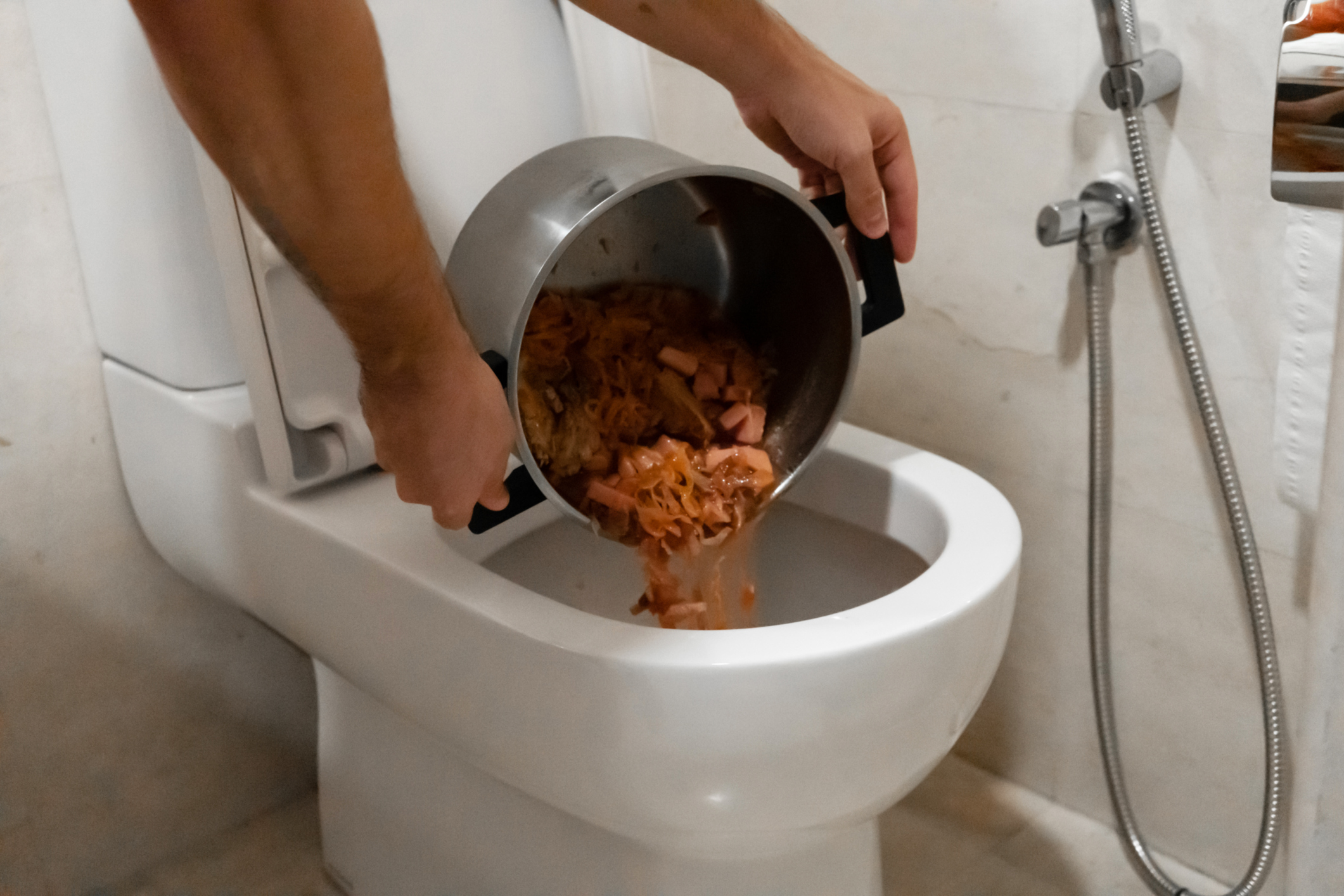Is it Suitable to Dispose of Food Waste in the Toilet?
Is it Suitable to Dispose of Food Waste in the Toilet?
Blog Article
Just how do you actually feel in regards to Think Twice Before Flushing Food Down Your Toilet?

Intro
Many individuals are commonly confronted with the dilemma of what to do with food waste, especially when it concerns leftovers or scraps. One common concern that occurs is whether it's fine to flush food down the toilet. In this write-up, we'll look into the reasons people could take into consideration flushing food, the effects of doing so, and alternate techniques for correct disposal.
Reasons that people could think about flushing food
Lack of recognition
Some individuals may not understand the prospective injury triggered by purging food down the bathroom. They may incorrectly think that it's a safe method.
Comfort
Flushing food down the toilet might look like a quick and very easy option to getting rid of unwanted scraps, especially when there's no neighboring trash can available.
Idleness
Sometimes, individuals may just choose to flush food out of sheer idleness, without taking into consideration the effects of their actions.
Effects of flushing food down the bathroom
Ecological influence
Food waste that ends up in rivers can add to pollution and damage marine ecological communities. In addition, the water made use of to purge food can strain water sources.
Plumbing concerns
Flushing food can cause stopped up pipelines and drains, creating expensive plumbing repair work and troubles.
Sorts of food that must not be purged
Coarse foods
Foods with fibrous textures such as celery or corn husks can get entangled in pipelines and create clogs.
Starchy foods
Starchy foods like pasta and rice can soak up water and swell, causing blockages in pipelines.
Oils and fats
Greasy foods like bacon or food preparation oils must never be flushed down the commode as they can strengthen and create clogs.
Proper disposal techniques for food waste
Using a garbage disposal
For homes furnished with waste disposal unit, food scraps can be ground up and flushed through the pipes system. Nevertheless, not all foods are suitable for disposal in this way.
Recycling
Specific food product packaging materials can be recycled, reducing waste and decreasing environmental influence.
Composting
Composting is an environment-friendly method to dispose of food waste. Organic products can be composted and utilized to enrich dirt for horticulture.
The significance of proper waste management
Minimizing environmental injury
Proper waste management practices, such as composting and recycling, assistance decrease pollution and preserve natural deposits for future generations.
Shielding plumbing systems
By preventing the method of flushing food down the bathroom, home owners can stop expensive plumbing repair services and keep the stability of their plumbing systems.
Final thought
Finally, while it may be alluring to purge food down the commode for convenience, it is very important to understand the potential effects of this action. By adopting appropriate waste administration methods and taking care of food waste sensibly, people can contribute to much healthier pipes systems and a cleaner setting for all.
FLUSH FOOD DOWN THE TOILET?
FLUSHING FOOD CAN CAUSE BLOCKED DRAINS IN YOUR HOME
All of the plumbing fixtures in your home are connected to the same sewer pipe outside of your home. This outdoor sewer pipe is responsible for transporting all the wastewater from your home to the Council sewer mains. Even small pieces of food that go down the kitchen sink can cause problems for your sewer. It should therefore be obvious that flushing larger bits of food, such as meat, risks a clog in either the toilet itself or the sewer pipes. Flushing greasy food is even more problematic because oil coagulates when it cools, coating the interior lining of your pipes.
THE TOILET IS NOT A BIN
Food isn’t the only thing that people shouldn’t be flushing down the toilet. People use the toilet to dispose of all kinds of things such as tampons, makeup wipes, dental floss, kitty litter and even underwear. Water goes to great lengths to educate residents about the high costs and stress placed on wastewater treatment systems simply from people flushing the wrong stuff down the toilet. It costs taxpayers millions of dollars each year, and homeowners thousands in blocked drain repairs.
FLUSHING FOOD IS A WASTE OF WATER
Flushing food is a waste of our most precious resource - water. In June this year Level 1 water restrictions were introduced to protect water supply from drought conditions. Much of New South Wales continues to be affected by prolonged drought with recent figures revealing up to 97 per cent of the state remains in drought. Depending on whether you have a single or dual flush toilet, every single flush uses between five and 11 litres of water. In the current climate this is a huge amount of water to be wasting on flushing food that should be placed in the bin (or better yet, the compost).
https://www.jabplumbingsolutions.com.au/blog/can-you-flush-food-down-the-toilet

We hope you liked our article about . Thanks a ton for spending some time to read our content. So long as you appreciated our post please do not forget to share it. I value your readership.
Apply Now Report this page